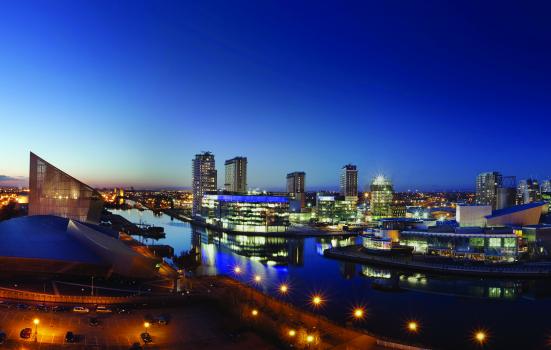Cultural investment in Salford’s regeneration may have created The Lowry, but its impact comes from a distinctive, entrepreneurial financial model, says Julia Fawcett.

It is safe to say that the subject of arts funding is firmly back on the agenda. The announcement of an inquiry by the Culture, Media and Sport Committee into the work of Arts Council England (ACE) has provided a renewed impetus to the debate on arts investment. Speaking to colleagues across the country, I know we are not alone in our determination to become better at effectively evidencing and articulating how investment in culture can affect change far beyond our theatres and galleries.
In November, The Lowry published 'Beyond the Arts', a study into the impact of The Lowry: artistic, economic and social. It tells a story more than two decades in the making, underlining what cultural investment can achieve and how artistic organisations can respond to and shape the landscape.
This means that our programme is a mixed ecology where commercial elements support the financially riskier work
Just twenty years ago, the site on which the venue now stands had come to the end of its life as a working dock. With the millennium approaching, Salford City Council had the bravery and vision to launch a hugely ambitious regeneration plan for the area and The Lowry project was born. Today we sit at the centre of MediaCityUK, one of the most significant culture and media destinations in the world, the new home to the BBC and the fastest growing visitor destination in the UK. This initial cultural investment has helped catalyse an astonishing regeneration project, which has seen The Lowry form the cornerstone to £1.4 billion in investment in the area.
The Lowry is the most visited attraction in Greater Manchester, welcoming over 850,000 through its doors in 2013. But that is not to say it has been easy, and it is no secret that we faced huge financial challenges in the early years. Those early challenges meant that we had to develop a resilient financial model that sees only 11.3% of income coming from public funding. Our success has come from responding to the environment around us, and taking advantage of our assets and opportunities.
Our three theatres attract a wide audience and made up 61% of our visitors in 2012/13. We do our best to ensure that our three performance spaces are consistently populated with a range of work that will appeal to the widest possible audience. This means that our programme is a mixed ecology where commercial elements support the financially riskier work. In 2003 we added our Studio space, which has become a crucial plank of our artistic programme, helping incubate emerging artists from the north west of England and beyond. In 2012/13 we presented over 900 performances.
Our location and position has also allowed us to develop a raft of commercial activity that generates financial returns to support the work of the organisation. Our bars and restaurants make the most of our popular programme and the growing appeal of the quays as a visitor destination. Our conference business takes advantage of the architecture and position of our building and welcomes delegates from around the world. The annual returns from these two areas of our business is £3.4 million and we operate these businesses in-house ensuring that the full benefit of these activities is ploughed back into our artistic and engagement programmes.
While The Lowry has become a landmark destination, we have never forgotten social regeneration is at our core. Salford has its challenges, with around 50% of the city falling within the 20% most deprived parts of England. Through community and education work both at the venue and in the communities around us, we work with more than 35,000 people (especially young people) every year in life-changing participation projects. In 2009 we launched the Our Lowry scheme, offering free and discounted tickets to Salford residents. The scheme has seen members engage with all areas of our programme, with Salford attendances to opera, ballet and dance more than doubling. In 2013 the value in subsidy to Our Lowry members was more than £175,000. And we are also playing a major role in the work and skills agenda for the region, co-sponsoring a new university technical college, training the next generation of creative and digital professionals.
‘Beyond the Arts’ identifies that for every £1 of public money invested in The Lowry there is a return of £16.27. But we are aware that we are just one example of a regional arts organisation developing a distinctive entrepreneurial financial model, and there are countless others. Theatre Royal Plymouth's investment in production infrastructure through TR3 has enabled them to build productions for other companies and to open a range of high-quality national and international tours – securing valuable product for the city. Then there’s the Brewery Arts Centre in Kendal, which has worked with partners to develop a vibrant programme of festivals making the venue into an international destination.
What all these organisations have in common is that their business models are underpinned by investment in the cultural programme. As a sector, we work harder than anyone else to guarantee that investment is used to ensure the strongest possible impact for our communities. Publishing ‘Beyond the Arts’ has proven to be one of our most significant steps in telling our story. I hope that in the coming months we are able to come together as a sector to celebrate all of our stories, proving once and for all that investment in the arts is in safe hands.
Julia Fawcett is Chief Executive of The Lowry.
www.thelowry.com




